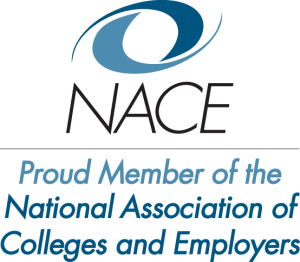Help Your Students Capitalize on Planned Happenstance
The Why Behind PathwayU
PathwayU was built to help students find their purpose in life. Our platform is based in science and academia. Our mission is to help students and universities create pathways for all.
Our co-founders, Bryan Dik and Kurt Kraiger are the brains behind the technology and created this series to help explain the why behind PathwayU. Click here to download our e-book and set up a custom tour here.
It's Necessary to Prepare for Change
If you’ve been tracking recent news on the Covid-19 pandemic’s impact on Americans’ working lives, you’ve heard about the anticipated turnover tsunami.
With nearly half of American workers showing signs of wanting to quit their jobs to pursue something else, and two-thirds of unemployed adults also considering a career change, change is the new normal. Your students are noticing this, and wondering how they can best prepare for a world of work defined by transition and change.
In Part 1 of this two-part series, I described the notion of career adaptability and urged educators and counselors to help their students develop the capacity to cope with the changes they will inevitably confront. In Part 2, I explore another concept developed by vocational psychologists to help students prepare for and create positive change: planned happenstance.
In a world that’s constantly changing, having a plan may be the difference between success and failure. @JobZology says planned happenstance should be front of every student’s mind as the next school year begins:@JobZology
What is Planned Happenstance?
Having a planned approach for the future is important, but how do you pair this with the reality that most people, when asked how they got to where they are today, attribute at least some of their success to events that seem completely outside their control?
Unexpected twists and turns are common. One study found nearly two-thirds of older adults identified a serendipitous, seemingly random event that influenced their career trajectory in a nontrivial way¹.
Vocational psychologists have studied these supposedly random events and tend to view them as not random at all. Instead, they call this phenomenon planned happenstance. Planned happenstance starts with the idea that it’s important to live an active life—trying new things, introducing oneself to new people, learning about them, listening to them, and sharing one’s plans and passions with them.
The more students do these kinds of things, the more likely it becomes that one of these interactions will introduce a legitimate opportunity that opens new pathways for living out their purpose. The key in leveraging planned happenstance is not merely to identify, evaluate, and pursue unexpected opportunities when they come up, although doing so is important.
Rather, the key is to create those opportunities. The more actively a person engages in life, the more of these opportunities that person will encounter. The point is to live boldly, with vigor and without fear, constantly trying new things and “putting yourself out there.” Do these things, and then expect the unexpected.
@JobZology's Dr. Bryan Dik believes that Planned Happenstance, a strategy for preparing for future change, is essential to finding your way in a career path. Here’s his deep dive into Planned Happenstance: @JobZology
Alissa: A Case Study in Planned Happenstance
What does it look like, practically, to live out a calling using planned happenstance? Consider Alissa. She is a professor at The King’s College in New York City, teaching writing, criticism, and cultural theory.
She also serves as a staff writer for Vox. Before Vox, she was the chief film critic at Christianity Today and spent a decade writing on pop culture and art for outlets like Rolling Stone and The Atlantic. She is regarded as “one of the most prolific, eloquent, and creative culture critics working today.”² How did she get there?
“I don’t think I ever really did make a conscious choice,” she told Forma.³ “It was just a natural extension of my everyday life to pitch reviews to editors for movies I was going to see anyway…I was good enough at writing that people kept asking me to do it, and if you stick around long enough and have a knack for it, the work starts to snowball. But there was no moment where I sat down and said, ‘I would like to become a critic, and here are the steps I will follow to do that.’ I know people who have done that, but it wouldn’t have worked for me. I didn’t set out to become a teacher..."
"In general, though, for the first seven or eight years of my career, I just pitched articles haphazardly as they occurred to me, and whenever someone offered me work doing something—whether or not I thought I was fully qualified for it at the time—I said yes, and figured out how to do it afterward. That’s led to criticism and teaching. But it wasn’t a path I set out on, nor do I really think I would have thought of it as a career path until recently.”
Alissa describes her career as more of a gradual unfolding than the result of careful planning. Career experts would urge a more goal-oriented strategy, yet Alissa’s experience nevertheless reveals a process of creating and then capitalizing on new opportunities.
Her background prepared her well for this path; while growing up, she read books incessantly and was a classically trained pianist by the time she entered adulthood. Both of these helped equip Alissa for concentrating deeply on art for long periods of time. But pitching editors, writing engaging reviews, and developing effective learning experiences for students—these were skills Alissa developed in response to opportunities she saw in front of her, and opportunities she created.
All of these tasks align with her interests and abilities, and all of them support her mission of engaging in the work of translation—that is, “figuring out how to express things in terms that people who might not think those things are ‘for them’ can understand,” as she described to me.
"There was no moment where I sat down and said, ‘I would like to become a critic, and here are the steps I will follow to do that.’ I know people who have done that, but it wouldn’t have worked for me."
Alissa
How to Utilize Planned Happenstance
In their own career paths, students can use planned happenstance can create new opportunities. When a promising opportunity emerges, even one they might never have imagined before, urge them to evaluate how well it fits who they are—their interests, values, personality, and workplace preferences.
Students can gain clarity on these aspects of themselves using the reliable and valid instruments within PathwayU, a scientifically supported, user-friendly online career assessment system. Encourage students to carefully consider the following questions:
- Does this opportunity fit my gifts well?
- Do my current circumstances allow for it?
- Have I discussed the possibility with important people in my life?
- Can I envision expressing my gifts through this path in ways that make the world better?
If a student’s answer to questions like these is “yes,” encourage the student to jump on the opportunity with confidence.
Help Your Students Make Change Work for Them
Here, you’ll reiterate what you've said in a different, preferably more specific way in terms, and tell readers how to implement this information in their career/future.
The changing world of work is intimidating, there is no doubt about it.
But students can use the dynamics of change to their advantage. Indeed, they can create change, and adapt to it using their gifts. That process is a fundamental part of planned happenstance, and students who learn happenstance skills will have a competitive advantage.
Portions of this essay were adapted from Bryan Dik’s latest book Redeeming Work (Templeton Press).
If you’re interested in getting your students on the right career path, please visit Pathwayu.com!
¹Deborah G. Betsworth and Jo-Ida C. Hansen, “The Categorization of Serendipitous Career Development Events,” Journal of Career Assessment 4 (1996): 91-98.
²David Kern, “Leaning to Look: Alyssa Wilkinson on Eliminating Ego, Setting Aside Taste, and Pushing Past the Obvious,” FORMA 6 (2017): 9-11.”
³Kern, “Learning to look.”
-1.png?width=288&height=67&name=PathwayU_PGLogo%20(1)-1.png)











